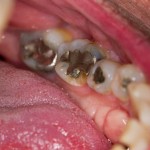
This review of the diagnostic performance of commonly used methods for occlusal caries diagnoses included 37 studies the majority (29) being conducted in-vitro. While summary diagnostic performance datafor a muber of diagnistic methods is provided it should be treated cautiously as th data is limited in many areas.
[read the full story...]








